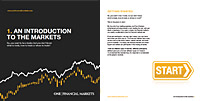

Oil Makes 3-Week High as U.S. Draws Blot Out China Lockdowns
By Barani Krishnan
Investing.com -- U.S. crude rose above $90 per barrel the first time in three weeks as oil bulls rejoiced over a sharp inventory draw for a second straight week even as top importer China stifled market enthusiasm with one COVID lockdown after another.
An Associated Press report citing a possible imminent attack against Saudi Arabia by Iranian elements also provided political risk support for oil.
New York-traded West Texas Intermediate, the benchmark for U.S. crude, settled up $1.63, or 1.8%, at $90 a barrel, after a session peak at $90.33. It was WTI’s first $90 breach since Oct. 10.
London-traded Brent crude, the global benchmark for oil, settled up $1.51, or 1.7%, at $96.16 per barrel. It earlier hit $96.42 for its highest since Oct 10 as well.
Crude prices fell earlier in the day on more bleak COVID news out of China where the manufacturing facility for the iPhone came under lockdown after the shuttering of Shanghai Disneyland earlier in the week.
Some stock market jitters over the Federal Reserve’s monthly rate decision due later on Wednesday also crossed over to oil’s side. The Fed is widely expected to raise rates by another 75 basis points, the fourth time it will be doing so in the six rate decisions it has taken since March.
Crude prices, however, turned around after the U.S. Energy Information Administration, or EIA, reported that crude stockpiles across the United States fell by 3.115 million barrels during the week ended Oct. 28, following through with the previous week’s consumption of 2.588 million barrels.
Industry analysts tracked by Investing.com had expected a crude build of only 367,000 barrels for the just-ended week.
The EIA also reported a drop of 1.257 million barrels in gasoline inventories for the week to Oct. 28, versus forecasts for a 1.3 million-barrel draw after the previous week’s consumption of 1.478 million barrels. Gasoline is the No. 1 automobile fuel in the United States.
But the EIA inventory report had its weak links too.
U.S. crude exports, which hit record highs above 5 million barrels in the previous week to Oct. 21, were below 4 million barrels this time.
There was also a third straight weekly build in distillates, which rose by 427,000 barrels last week after a net rise of almost 300,000 barrels in two previous weeks. Distillates are required for making the diesel needed for trucks, buses and trains, as well as fuel for jets.
Adding to the bull case for oil, however, was the U.S. Strategic Petroleum Reserve’s drop to below the key 400 million-barrel mark as the Biden administration kept drawing crude from there to keep fuel prices low for Americans even as global producers under the OPEC+ alliance slash production to get higher revenues for their oil.
As of the week ended October 28, the so-called SPR’s balance stood at 399.8 million barrels, its lowest level since May 1984. The Biden administration has drawn down more than 200 million barrels from the reserve over the past year to alleviate a global deficit in crude supply that might otherwise send U.S. fuel prices to new highs.
Pump prices for fuel did hit record highs of just above $5 per gallon in mid-June as energy consumption in the United States peaked at the height of summer travel. But they have come down since, averaging well below $4 per gallon now.
President Joe Biden has, however, taken much heat from rival Republicans who have accused him of risking the nation's emergency oil reserves to try and appease voters and defend his Democrats' control of Congress and Senate. The U.S. midterm elections are on November 8.
“The SPR is likely to become an even hotter political potato now that the reserve has fallen below the 400 million-barrel mark,” observed John Kilduff, partner at New York energy hedge fund Again Capital.
Biden, defending his administration's use of the SPR, says his priority is alleviating the hardship of Americans suffering from the worst inflation in 40 years, contributed significantly by high energy prices.
Begin trading today! Create an account by completing our form
Privacy Notice
At One Financial Markets we are committed to safeguarding your privacy.
Please see our Privacy Policy for details about what information is collected from you and why it is collected. We do not sell your information or use it other than as described in the Policy.
Please note that it is in our legitimate business interest to send you certain marketing emails from time to time. However, if you would prefer not to receive these you can opt-out by ticking the box below.
Alternatively, you can use the unsubscribe link at the bottom of the Demo account confirmation email or any subsequent emails we send.
By completing the form and downloading the platform you agree with the use of your personal information as detailed in the Policy.






